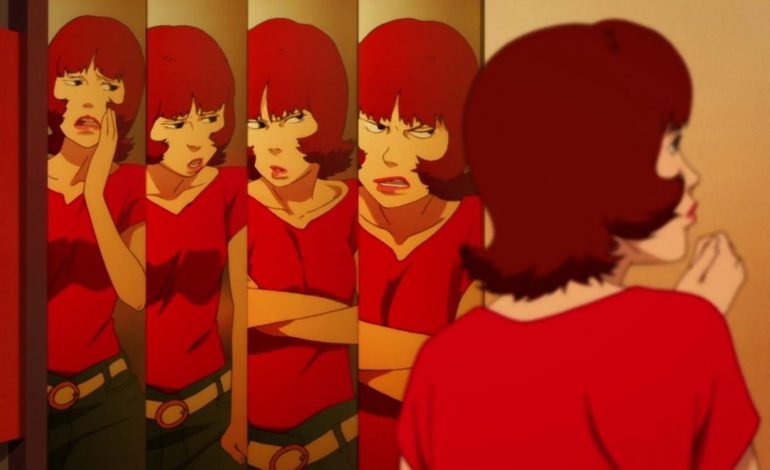

For over the last hundred years, the subconscious mind has been of interest to artists and scientists all over the world. From art movements like surrealism to the introduction of Freudian psychoanalysis, the relationship between the subconscious and conscious reality has been a heavily investigated subject that is continued to be explored and studied to this day. Although many films have adopted the motifs that are common to surrealist themes and aesthetics, films that use animation to tell their story have an advantage in creating an identifiable representation of different experiences of consciousness. In his 2006 animated film Paprika, Satoshi Kon examines the value of our dreams, the convergence of both our dream world and what we know to be the real world, and the role film can play between the two.
Dr. Chiba Atsuko (Megumi Hayashibara) is a psychiatrist who believes that accessing dreams will help doctors to better understand their patients. With the help of the D.C. Mini, invented by Dr. Kosaku Tokita (Toru Furuya), Dr. Atsuko is able to enter the dreams of others as her alter ego “Paprika,” to begin investigating the dreams of her patients in secret while the D.C. Mini is still unavailable to the public. After an unknown intruder hijacks the software, Dr. Atsuko and her colleagues embark on an investigation with the help of her patient Detective Toshimi Konakawa through the conscious reality of the world they live in and the subconscious dreams of those affected.
Alongside the mystery following the hijacked D.C. Mini, Paprika investigate’s Detective Konakawa’s own story full of repressed memories and aspirations from his younger days. The film opens inside one of his recurring nightmares that shows him chasing the culprit in one of his ongoing murder cases. His own plotline introduces a third realm to the discourse of consciousness. Before Detective Konakawa began his law enforcement career, he and a friend would make short films together and had aspirations of becoming filmmakers. When asked if he liked movies, he responds curtly that he does not and moves on. As the film progresses and we, the audience, make progress with him in confronting his past through his dreams, the detective comes to understand his own shortcomings. Through his subconscious, Detective Konakawa is able to use his investigative skills upon himself with the guidance of Paprika to come to terms with his past. By the end of the film, the detective returns to his passion for film as he walks into a theater to watch the film Dreaming Kids, suggesting a nostalgic return to youthful ambition and innocence.


This smaller narrative directly alludes to the power of filmmaking, exposing the value film brings to the very concept of consciousness. Film can be used as a tool that can help us represent and even recreate alternative experiences of consciousness. From a self-reflexive standpoint, Kon’s use of animation quite literally makes the unreal real by bringing images and scenarios that can only seem to exist in our imagination into the physical (or digital) world. As the film flips between the two realms it becomes more and more difficult to discern between the two because of animation’s ability to seamlessly combine two distinct representations of consciousness. In scenes where reality and dreams are merging, this becomes critical in establishing the difference between the two. When the dream world and the real world begin to merge, characters can fly, move through walls, and even shapeshift before our eyes. From the perspective of the audience, the only true way we become confident in our ability to tell the difference is by the verbal cues from the characters. Without those verbal cues, the audience can feel very lost in the plot and larger narrative. Much like the experience of dreaming, we take the experience for granted at face value until we can consciously recognize that something is off. While some can consciously identify that they are in a dream, others can’t tell the difference. Watching Paprika can feel like a similar experience.


As an avid enthusiast of anything that deals with the experience of consciousness, I find that Paprika offers a unique expression that many other films seek to execute as well. What sets Paprika apart from those other films, is its ability to weave all three realms (reality, dreams, and film), seamlessly together while still being able to comment on the relationship between them through its narrative. While live action films seek to emulate alternative experiences of consciousness through non-linear narratives or intentional inconsistencies within their plots, animation expands the possibilities of storytelling and Paprika is a great example.
